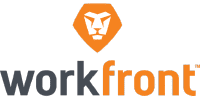Since the Industrial Revolution, companies have sought competitive advantage through gains in process efficiency. Non-farm U.S. labor productivity has steadily advanced at an annual average of 2 percent for the past two decades, reflecting the relentless drive by companies in every industry toward improvements that will sustain their operating models. Robotic Process Automation (RPA) is a recent example of this trend, involving the programming of software “bots” to conduct basic tasks across applications to reduce manual effort.
But whether it’s lean process outsourcing or RPA, solutions are only tools in a larger strategy to unlock next-level efficiency, scale and product opportunities. Companies must avoid a “hammer looking for a nail” approach by developing deliberate goals, a long-term roadmap and organizational readiness.
Here are five steps to ensure you create an automation strategy that captures the benefits of efficiency, scale and speed, while opening up new product and service opportunities.
- Set your (Automation) goals:
The single most important step in the process is to clearly articulate the program objectives. Is the goal to save money, reduce compliance errors, speed cycle times or increase revenue with new products? The more specific you are in the planning, the better you can prioritize opportunities and deliver solutions. In the short term, focusing on one or two measurements (e.g. cost and quality) is ideal, since the project needs to show a return on investment while building proficiency. Over time, however, companies are encouraged to take a portfolio view of the entire suite of benefits including speed, customer satisfaction and new products or services.
Action: Create a scorecard with current and target performance across the benefits for a five-year cycle. Distinguish primary and secondary benefits and establish a portfolio strategy to generate returns from existing solutions while investing in new opportunities.
- Go slow (to go fast):
After the headlines and sales pitches, many executives have high expectations from automation software and are tempted to apply it to their most challenging problems out of the gate. But these moonshot projects often struggle to build the required competency and momentum to sustain success. With a recent Mod Op Strategic Consulting client, we established a six-month pilot focused on efficiency targets within a single business unit. We scoped more than 25 opportunities to identify a robust pipeline, separating them into immediate, medium, and longer-term horizons based on the complexity and process risk. For our proof of concept, we chose a smaller program with a limited audience. The team was able to deliver a working project in just a few weeks and slowly expanded into more complicated and high-volume opportunities. One key learning from that experience is managing project timelines to enable fine-tuning and time for the human team to adjust to the new process.
Action: Select a single process or function to focus on for a pilot automation solution. Consider a lower risk “proof of concept” approach for the first solution, addressing a smaller or less complex element to compensate for the learning curve. At the same time, build a backlog of prioritized features for the development team to tackle as it gains momentum.
- Standardize before you automate:
Unlike a regimented factory with processes designed to fit standards, many office activities are a swarming mess of variations and exceptions supported by a human who understands the end objective and how to jump through hurdles to achieve it. These variations severely limit the automation opportunity from a volume and percent solution perspective. Companies must therefore be willing to re-engineer and standardize current “ad hoc” human processes as an important and critical part of the effort to maximize the total automation opportunity.
Action: Be prepared to transform your process to maximize automation benefits:
- Process: Remove unnecessary manual intervention, variations, and exceptions.
- Data format: Ensure the data input formats are supported by your automation solution, including most Office Suite products, CRM, ERP, HTML and others.
- Inputs and outputs: Standardized fields and formats.
- Select the right tools:
Just because RPA automation is super cool, doesn’t mean it’s the right tool for every job. Indeed, API’s, databases, macros and good old-fashioned process re-engineering can address some challenges more easily or cheaply than RPA. Integrating a suite of tools into your solution set allows companies to address a variety of situations to increase flexibility and long-term outcomes. These include:- APIs: Where possible, collect data from reliable sources, such as your customer relations management (CRM) system or web analytics, using Application Programming Interfaces (APIs). Building a bot to scrape data should be a last resort.
- Databases and Macros: A recent Mod Op Strategic Consulting client cut their RPA solution development time in half by deploying a simple database within the solution. This database delivered the additional benefit of improving the manual process for exceptions, further enhancing the solution.
- RPA: Solutions like UiPath, Automation Anywhere, and WorkFusion provide a robust set of RPA tools and access to open-source libraries of existing “bots”. Remember to approach development with the intent to reuse automated bot elements to accelerate impact while minimizing future development time.
- Machine Learning, Artificial Intelligence, Chat Bots and Crowd Sourcing: There are some processes that are too complex or ambiguous for RPA. In these scenarios as well as customer facing situations, ML, AI and chat bots increase the automation potential.
Action: Expand your thinking of automation beyond a single software, and provide practical alternatives to realizing automation targets.
- Prepare for the impacts of speed:
Accelerating one part of your process is likely to impact other elements, often creating new bottlenecks or breakpoints. Enabling an internal culture for speedis required to effectively manage these impacts and drive future enhancements to the process.
Action: Map out all the inputs and outputs in your process, including raw materials, decision making and approvals to understand and address items that risk becoming bottlenecks as the process speeds up. Consider adopting agile methodology to accelerate internal collaboration and support flexible prioritization models that adjust to rapidly changing landscapes.
There is no single silver bullet to achieve modern productivity gains. Rather than blindly following the latest automation technology, executives are encouraged to pursue an outcome-driven strategy backed by a strategic roadmap, carefully selecting the initial opportunity and applying a wide range of automation tools and re-engineering to most efficiently solve larger and increasingly complex challenges.
















